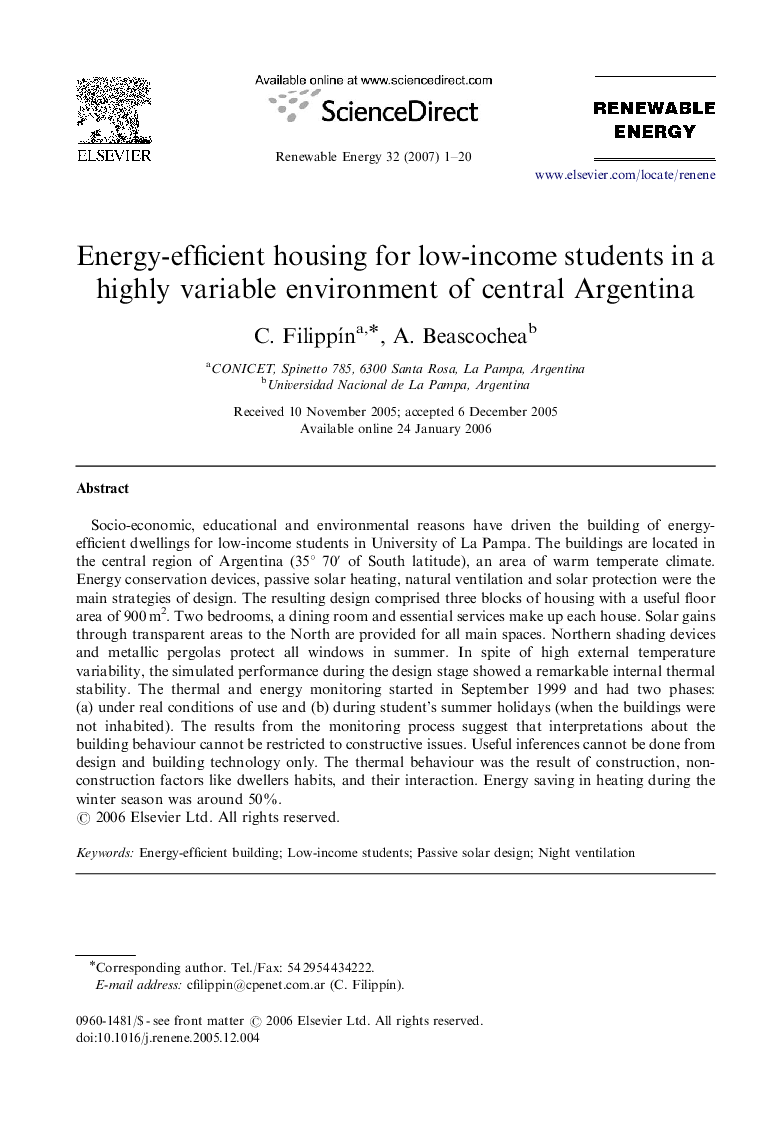| Article ID | Journal | Published Year | Pages | File Type |
|---|---|---|---|---|
| 302933 | Renewable Energy | 2007 | 20 Pages |
Socio-economic, educational and environmental reasons have driven the building of energy-efficient dwellings for low-income students in University of La Pampa. The buildings are located in the central region of Argentina (35° 70′ of South latitude), an area of warm temperate climate. Energy conservation devices, passive solar heating, natural ventilation and solar protection were the main strategies of design. The resulting design comprised three blocks of housing with a useful floor area of 900 m2. Two bedrooms, a dining room and essential services make up each house. Solar gains through transparent areas to the North are provided for all main spaces. Northern shading devices and metallic pergolas protect all windows in summer. In spite of high external temperature variability, the simulated performance during the design stage showed a remarkable internal thermal stability. The thermal and energy monitoring started in September 1999 and had two phases: (a) under real conditions of use and (b) during student's summer holidays (when the buildings were not inhabited). The results from the monitoring process suggest that interpretations about the building behaviour cannot be restricted to constructive issues. Useful inferences cannot be done from design and building technology only. The thermal behaviour was the result of construction, non-construction factors like dwellers habits, and their interaction. Energy saving in heating during the winter season was around 50%.
